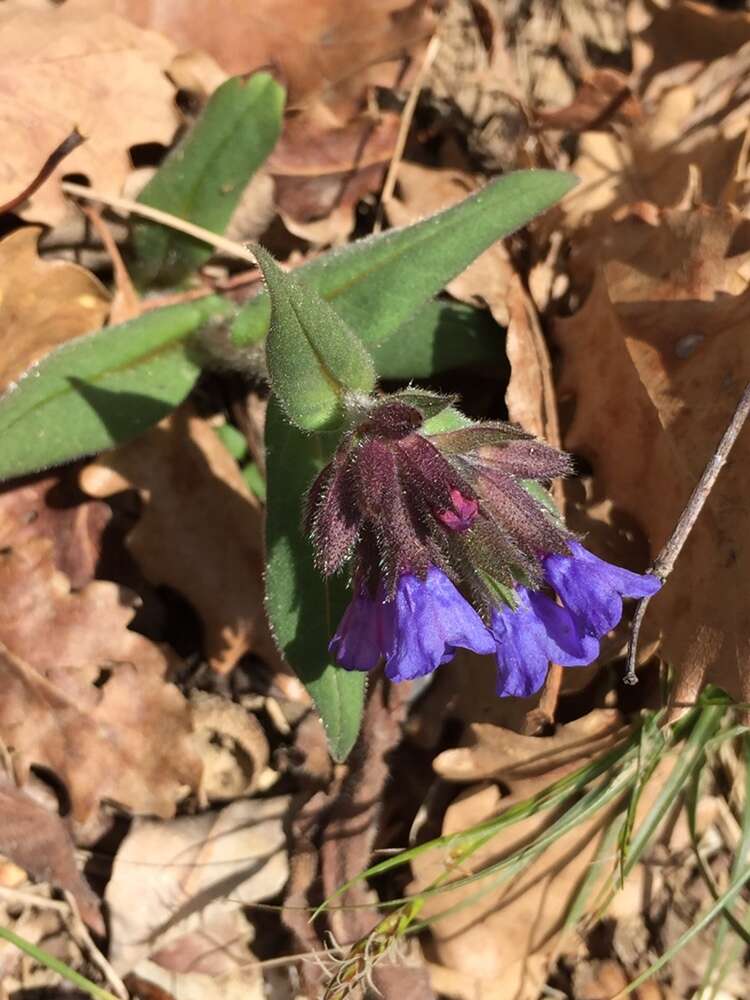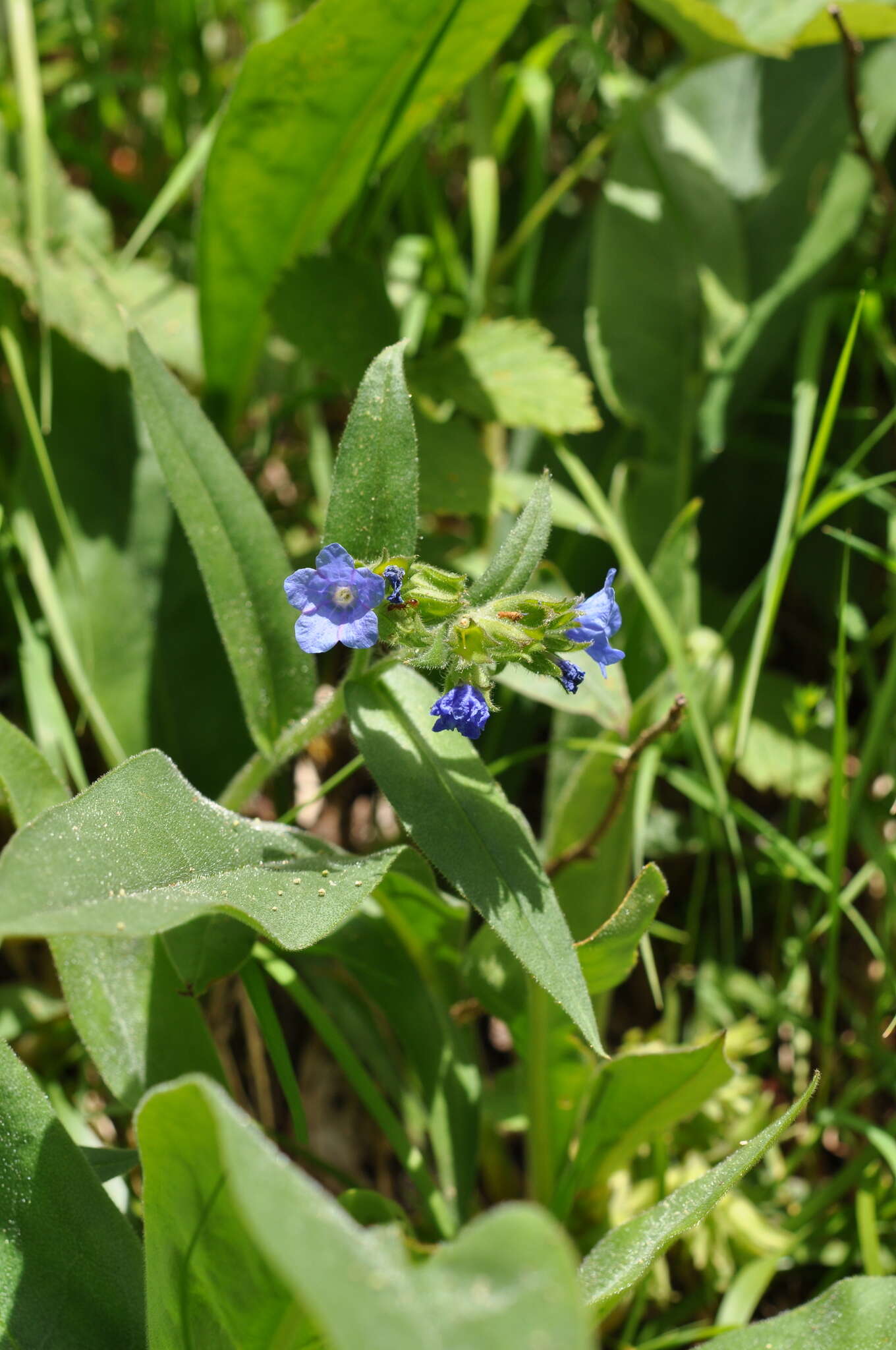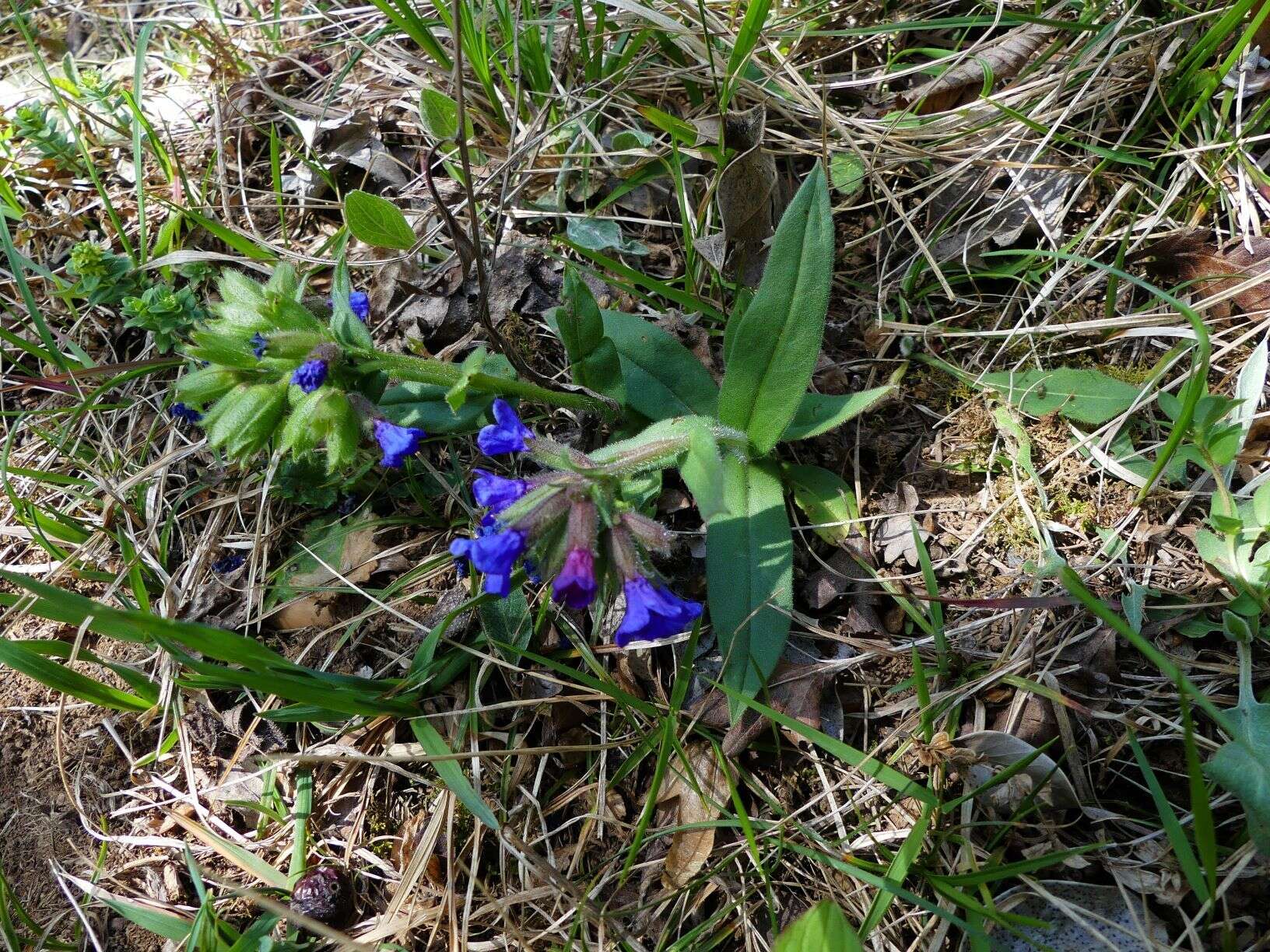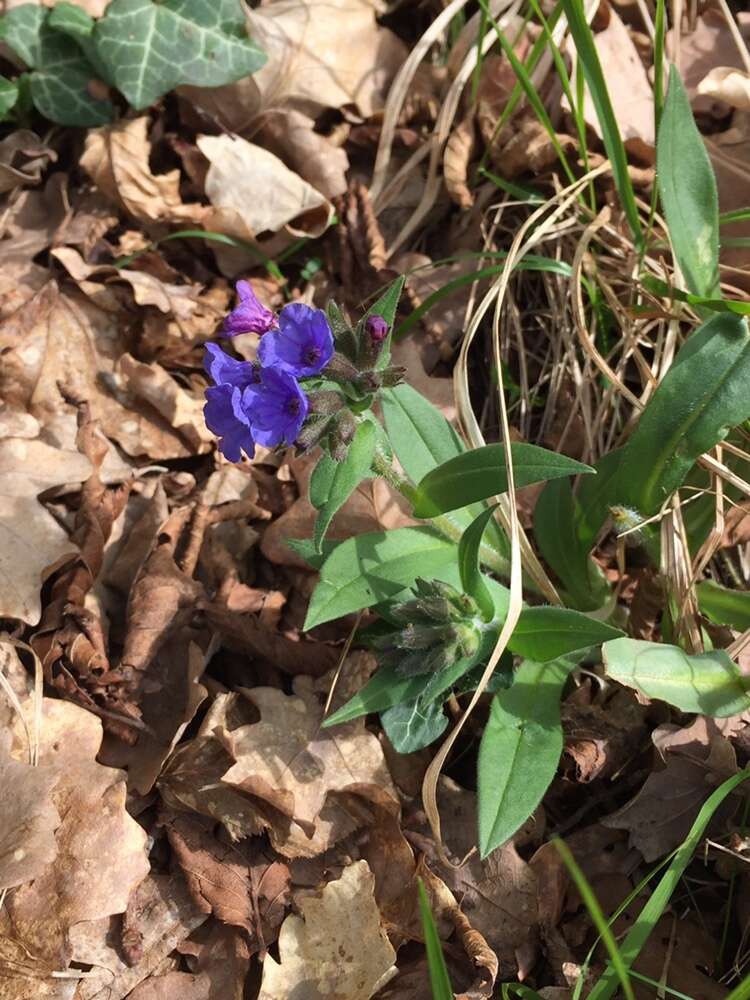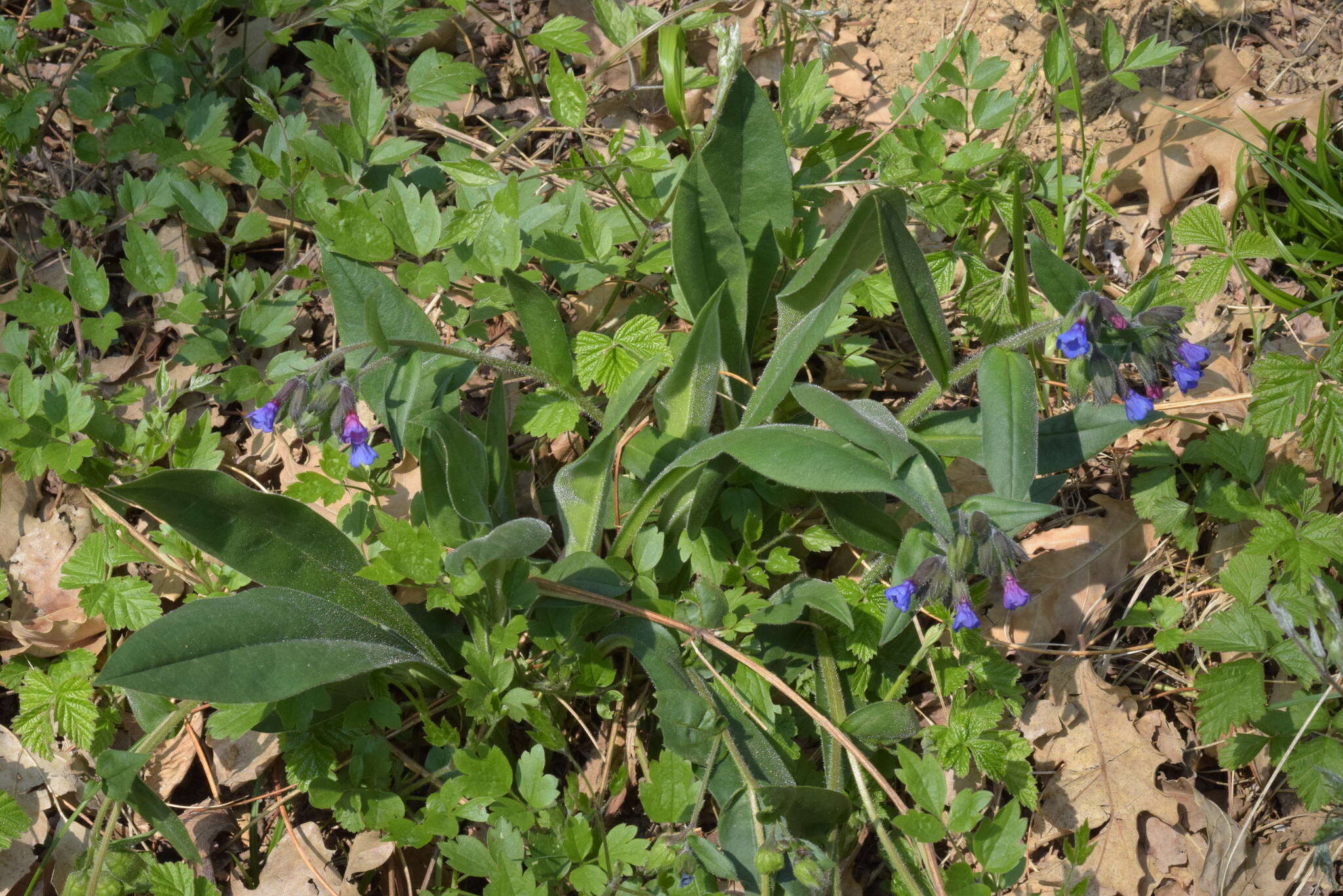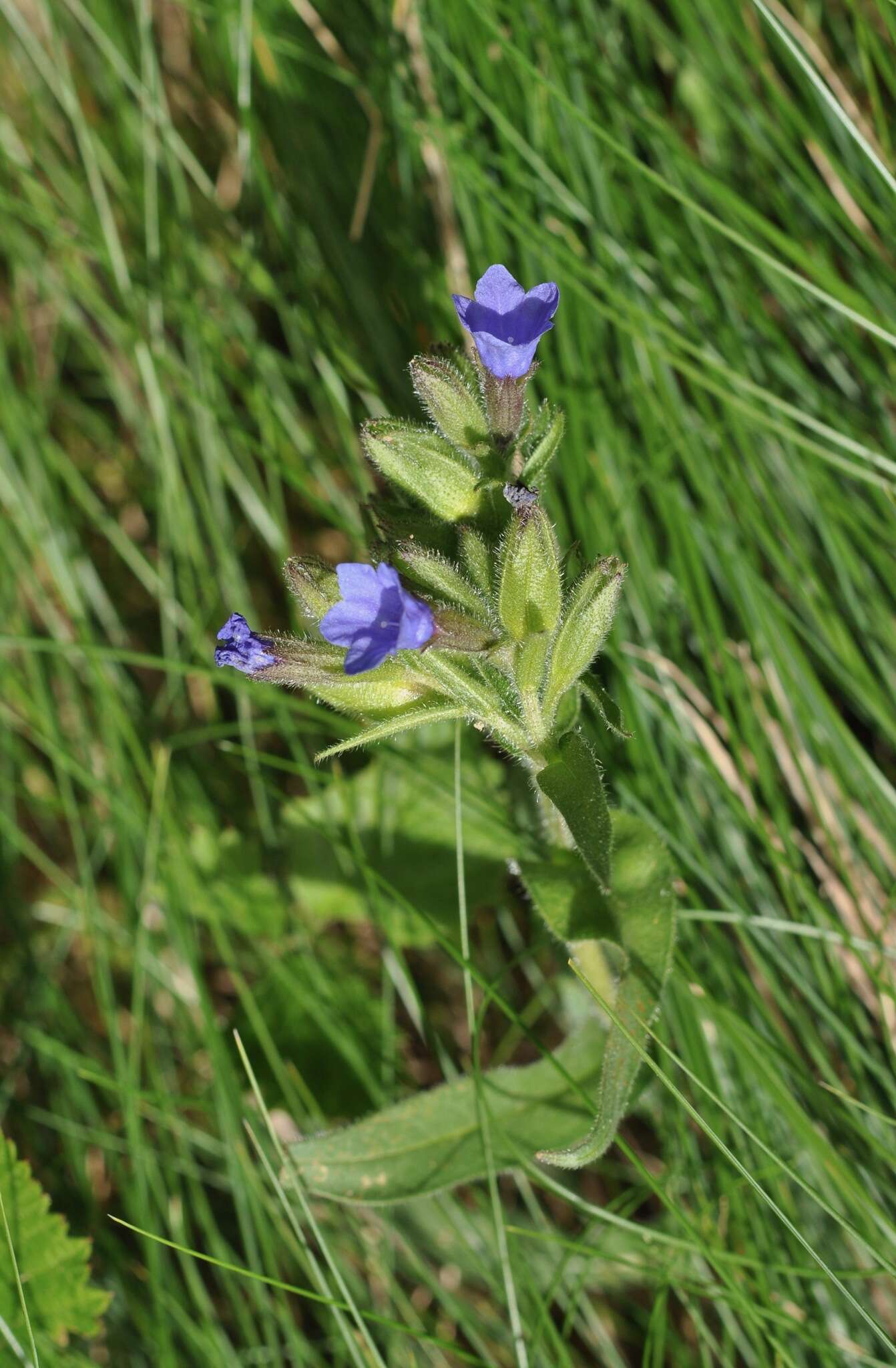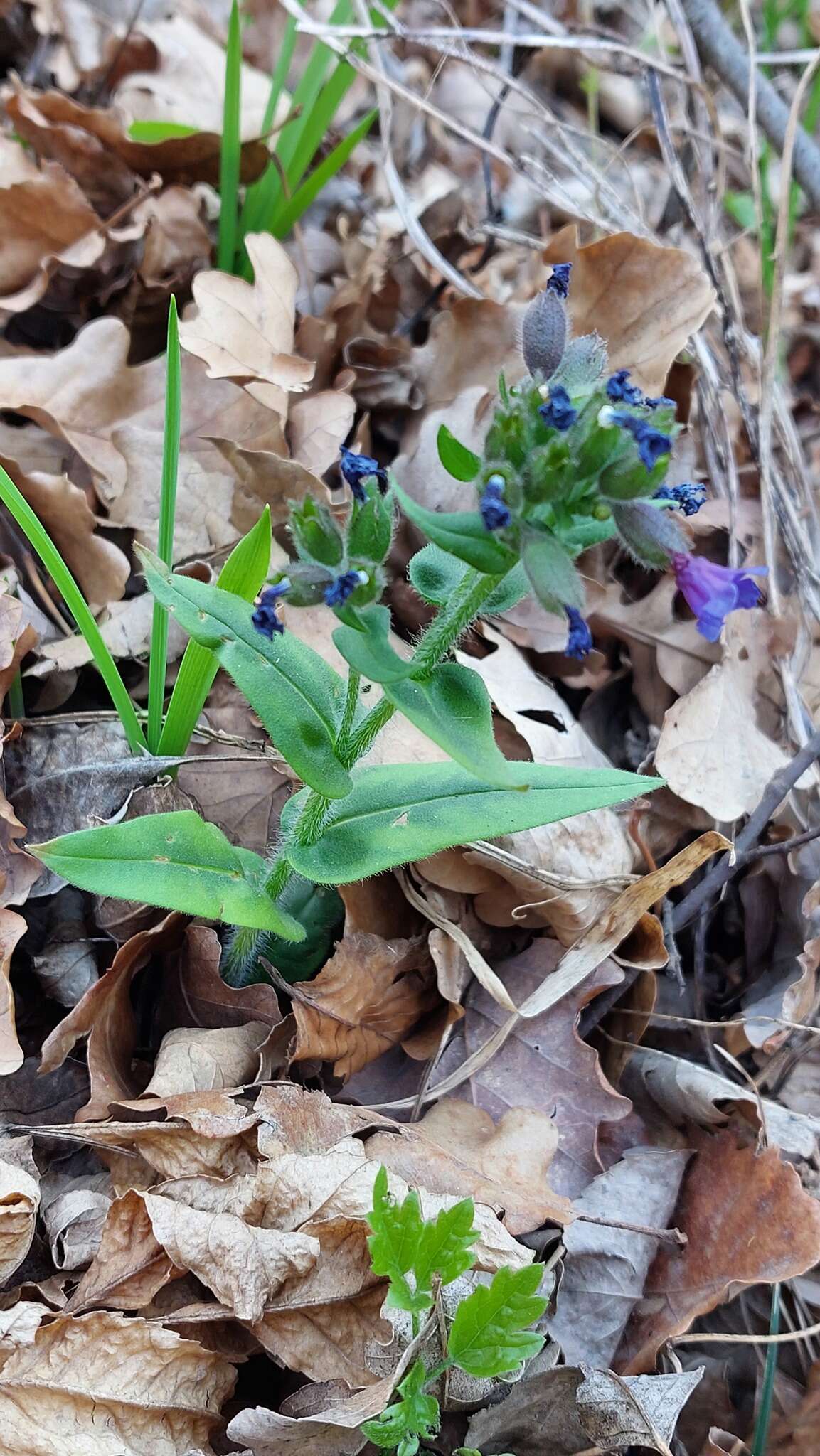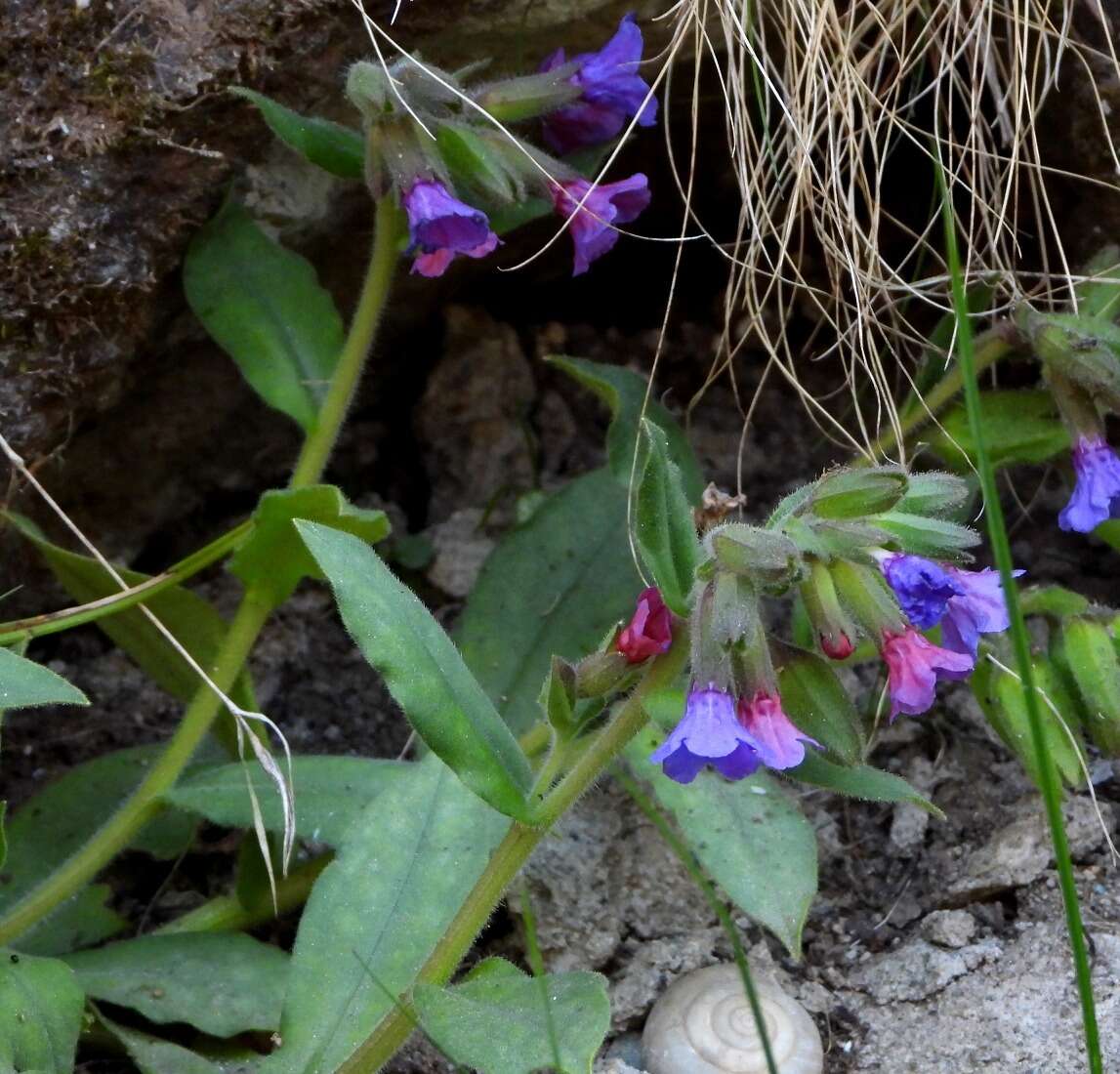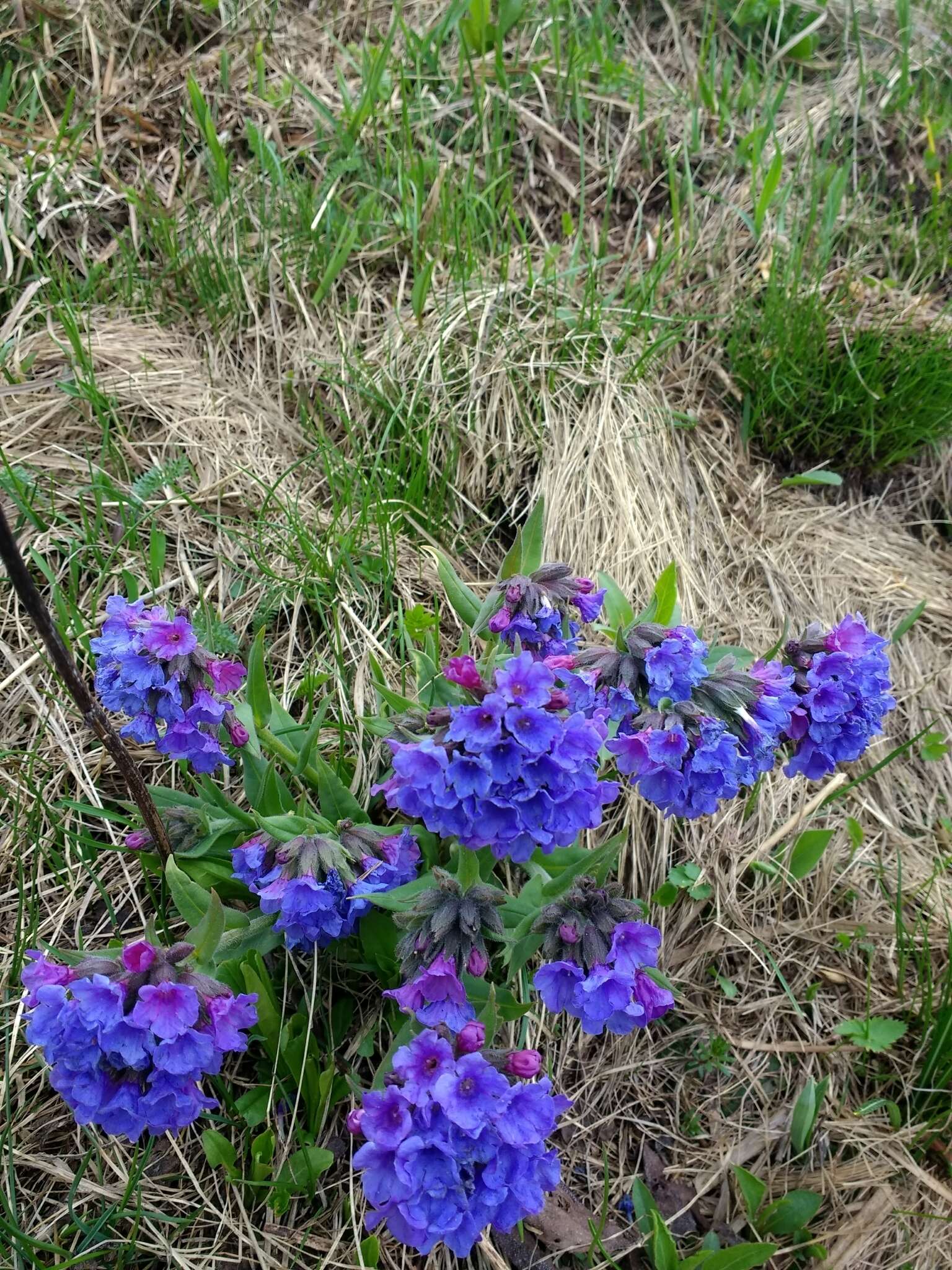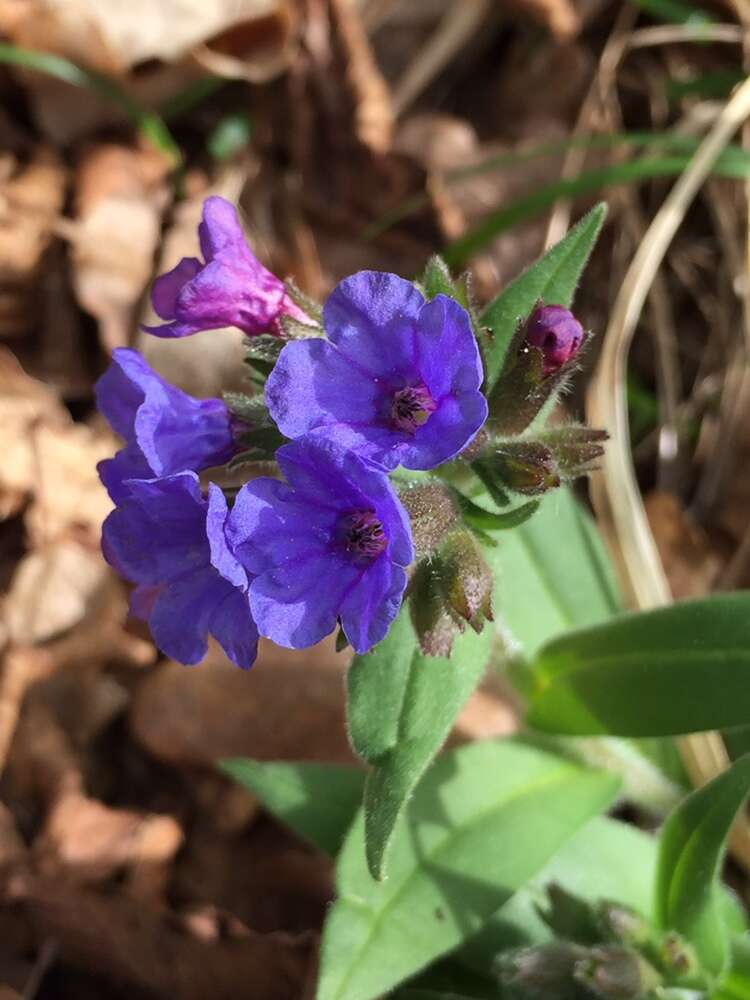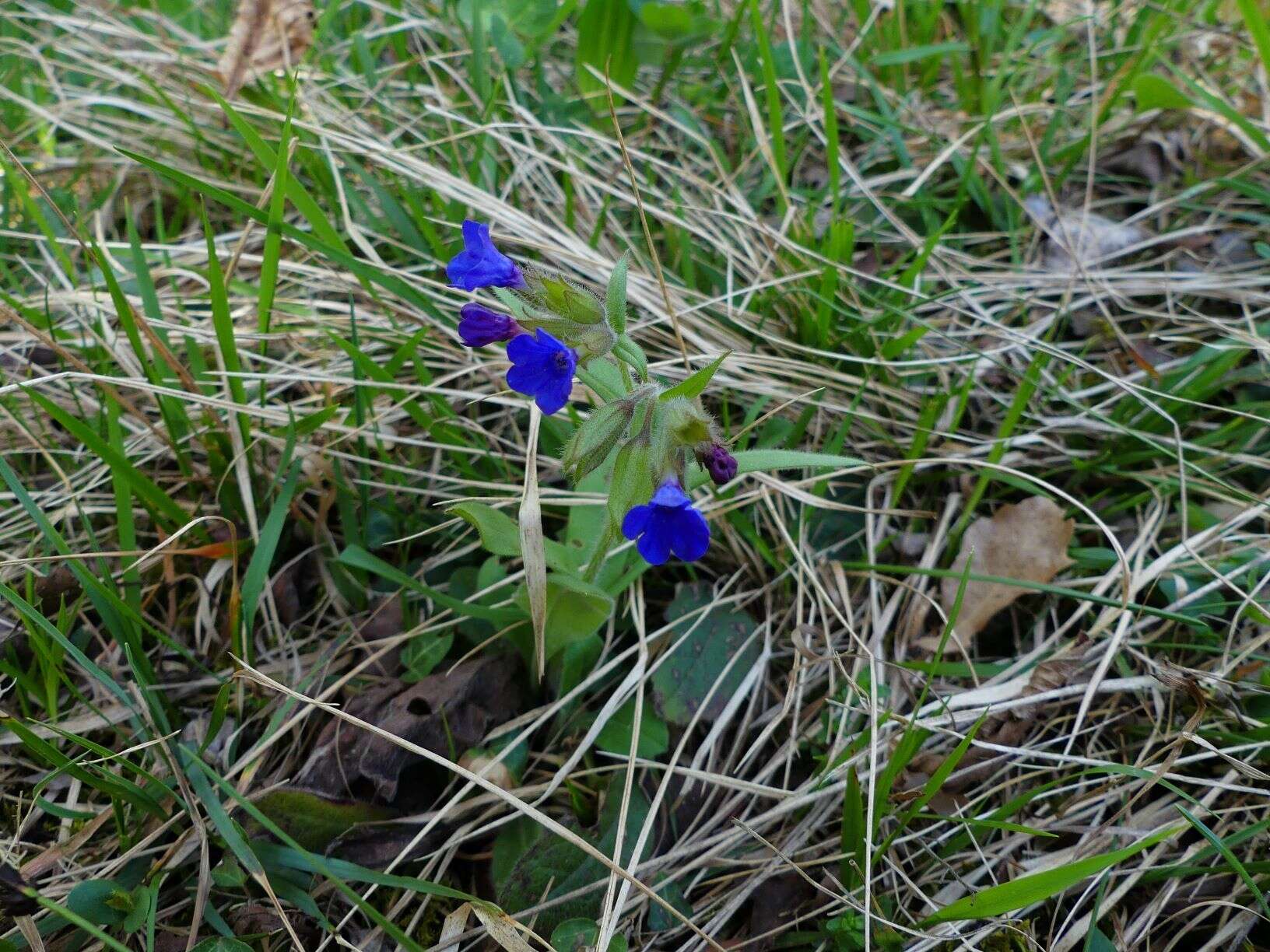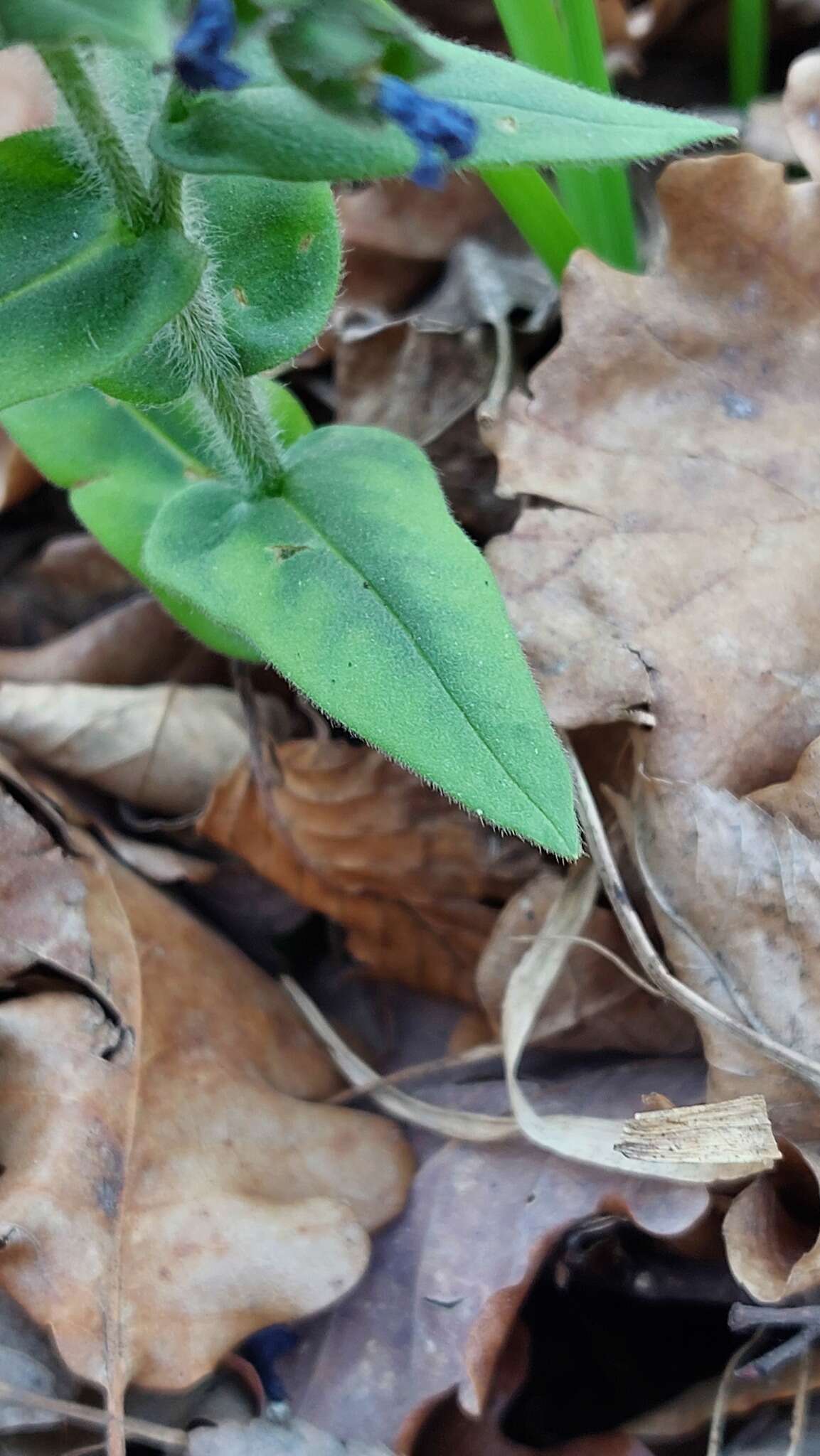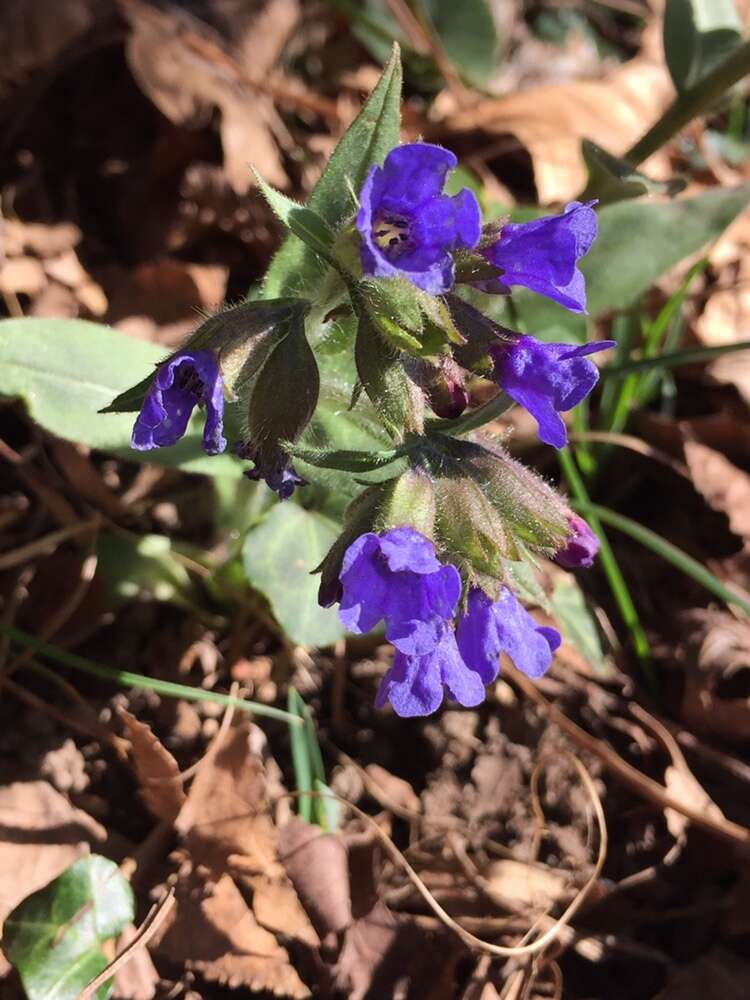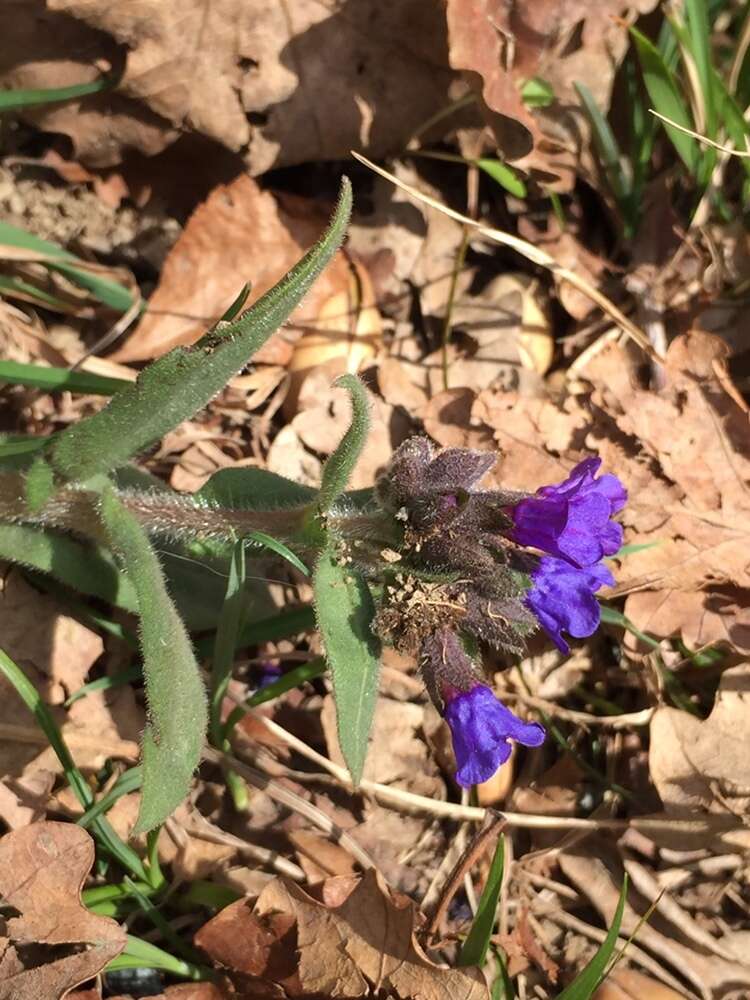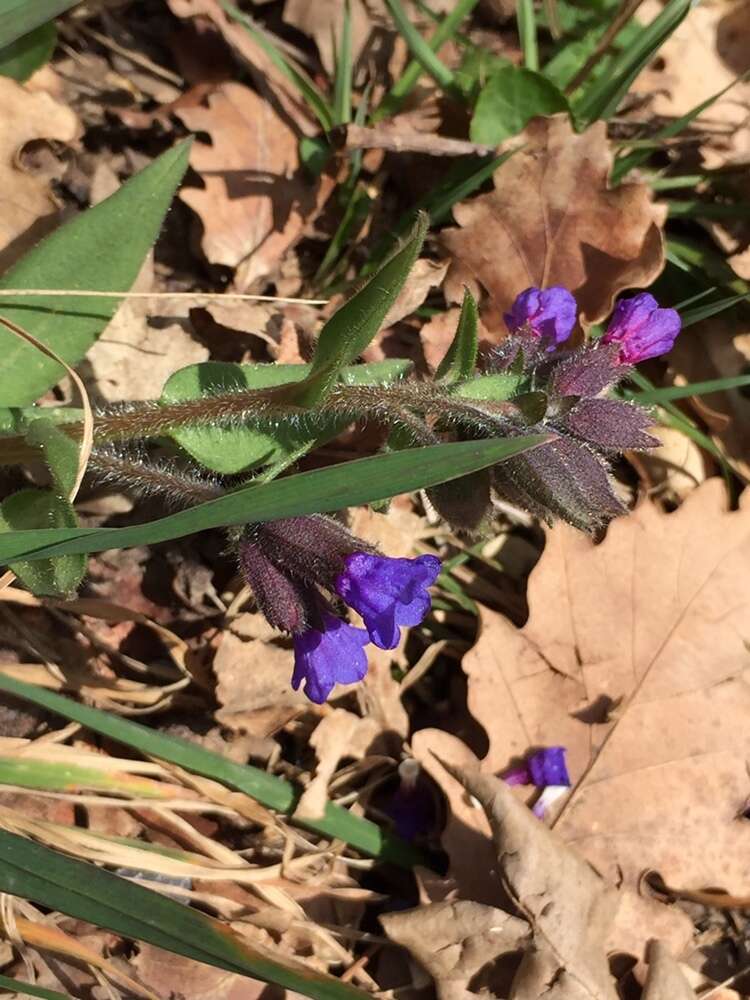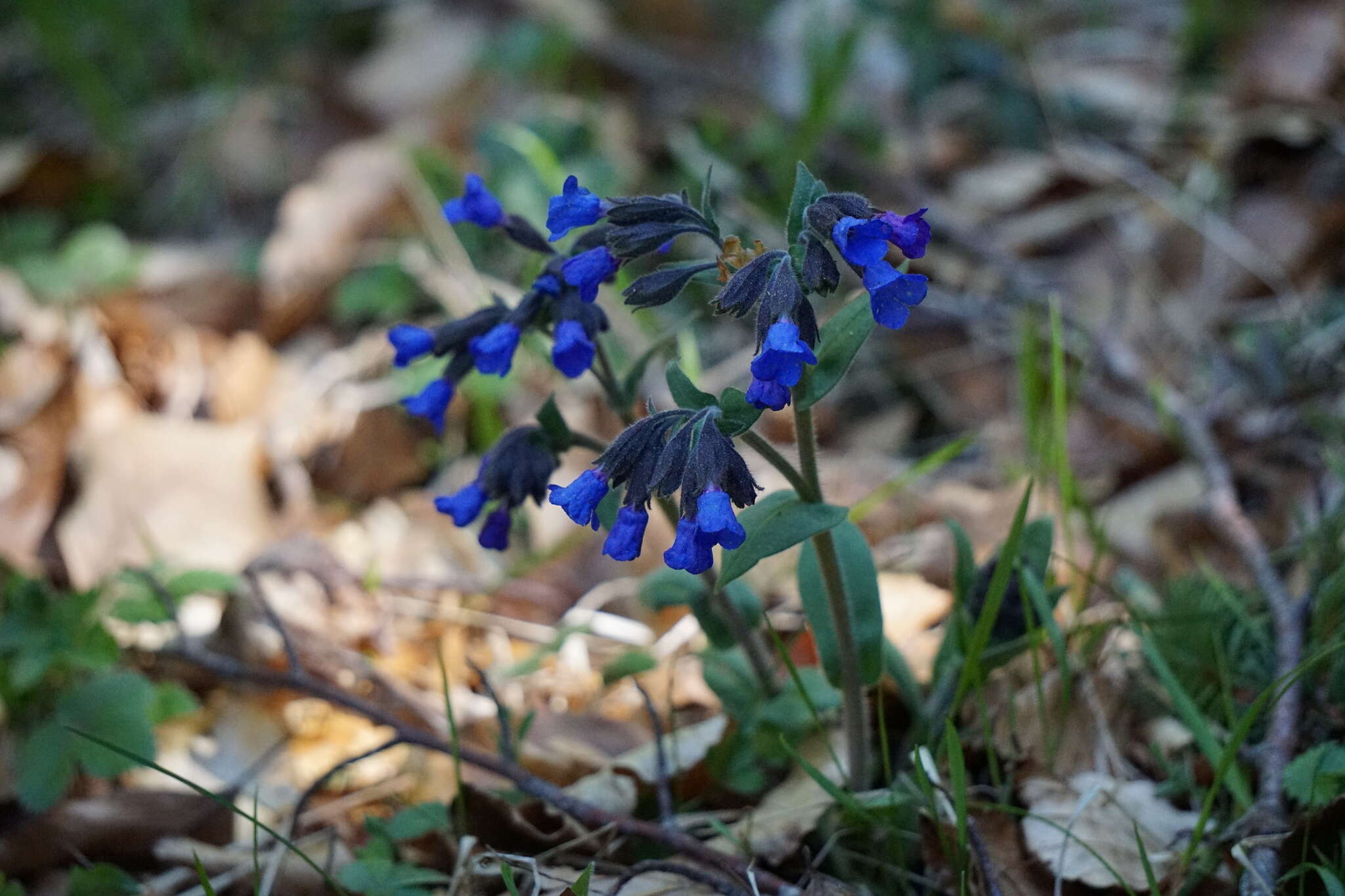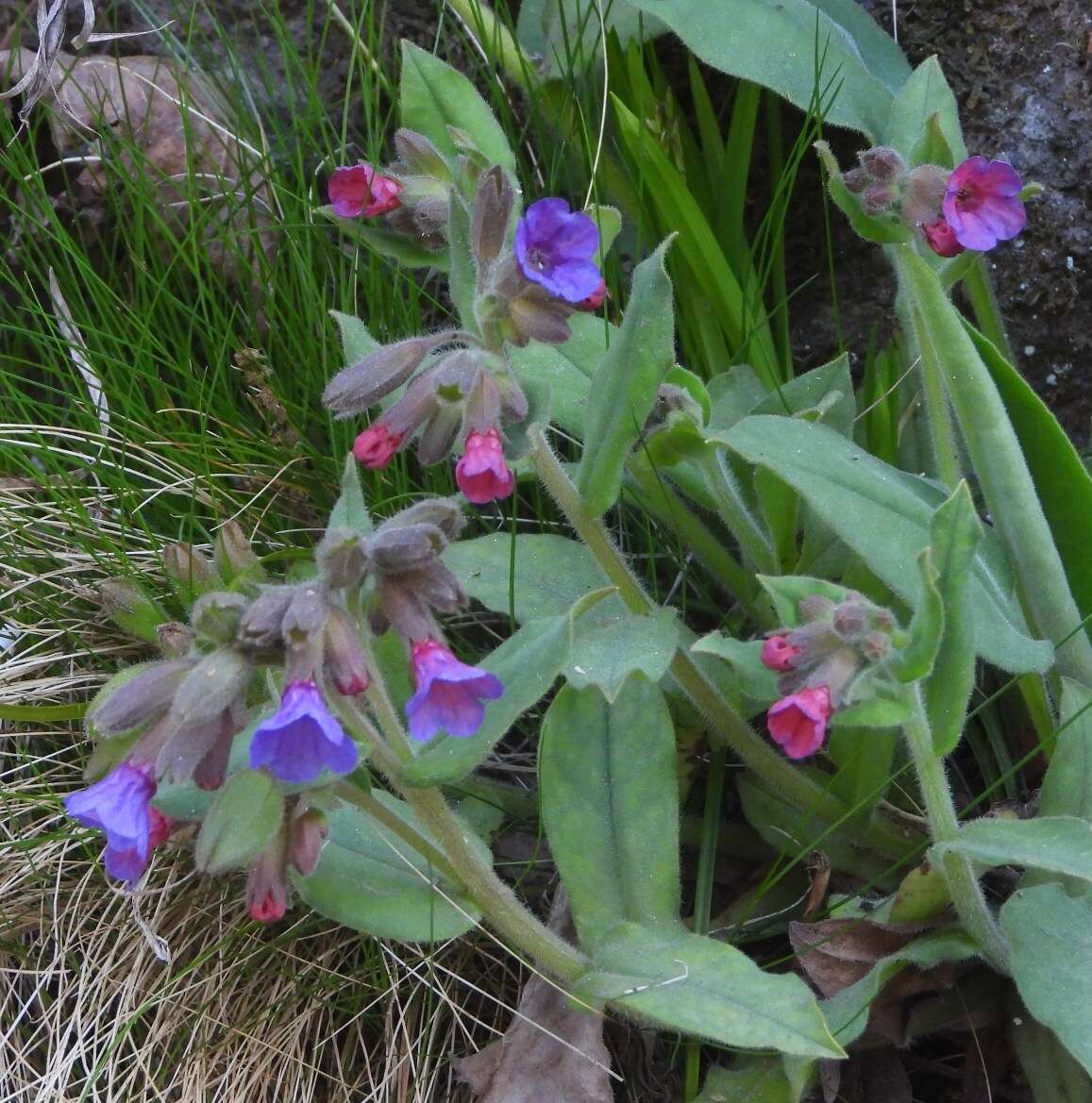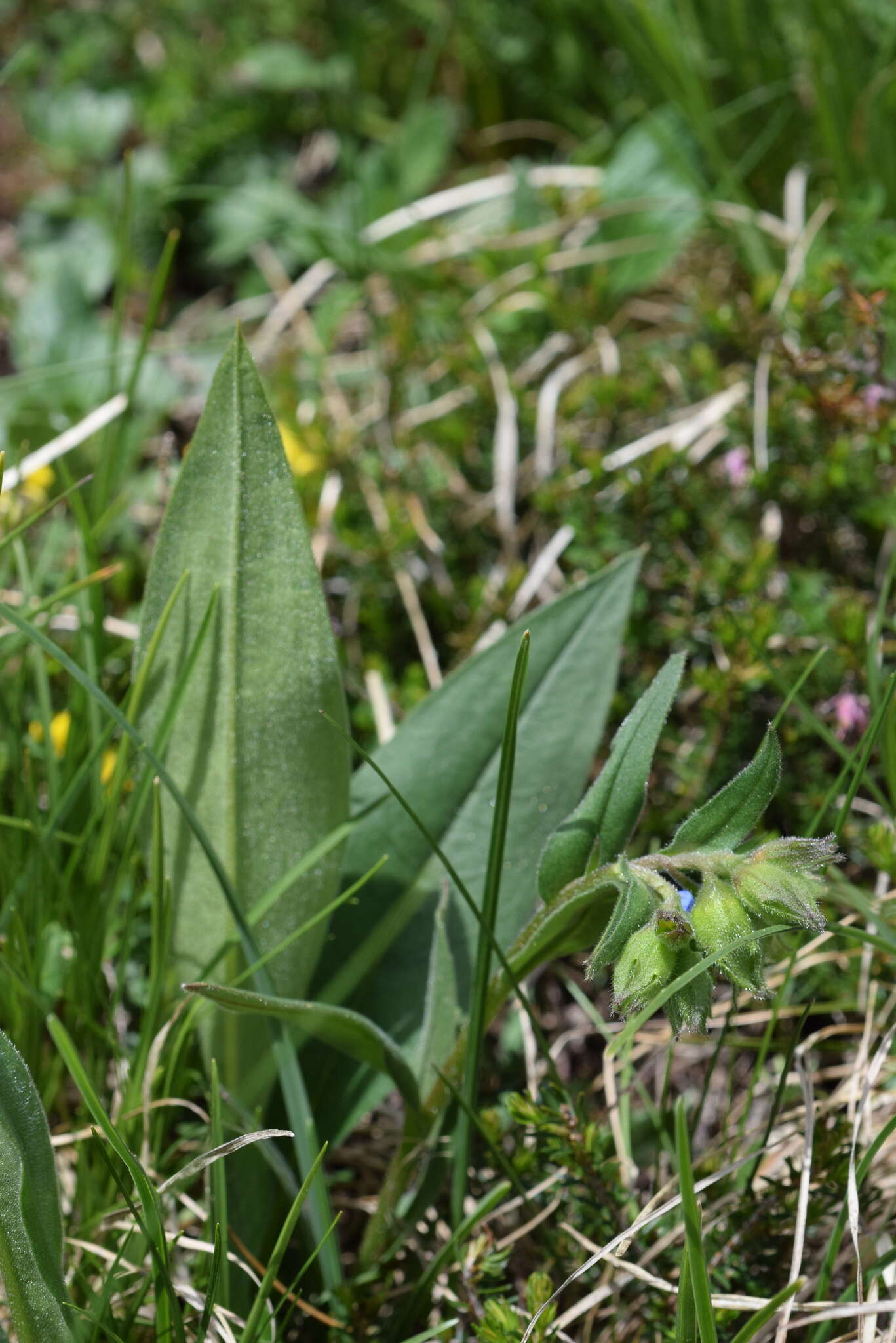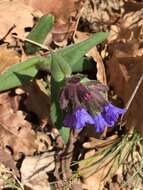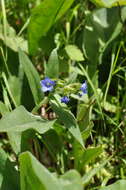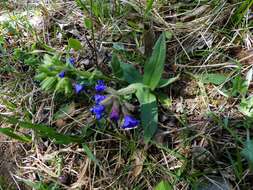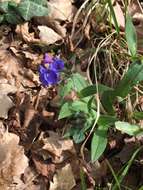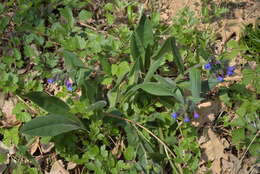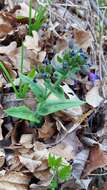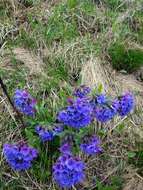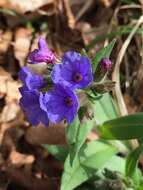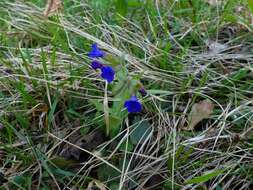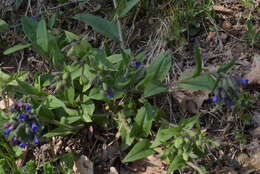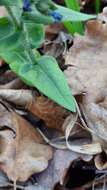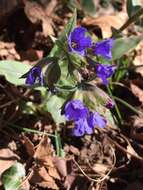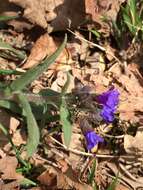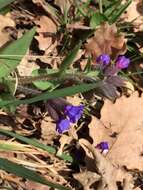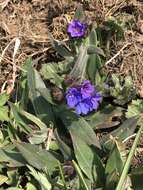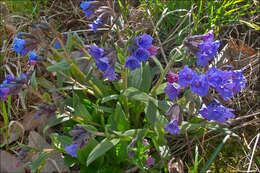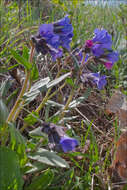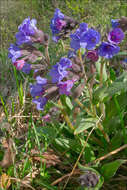-
-
-
-
-
-
-
-
-
-
-
-
-
-
-
-
-
-
-
-
-
-

Pulmonaria australis (Murr.) W. Sauer, syn: Pulmonaria angustifolia var. australis Murr, Pulmonaria angustifolia auct. non L., Pulmonaria azurea auct., Pulmonaria visianii Degen & LengyelEN: Narrow-leaved Lungwort, DE: Sdalpen-Lungenkraut, Schmalblttriges LungenkrautSlo.: juni plunik, (ozkolistni pljunik),Dat.: April 7. 2011Lat.: 46.04428 Long.: 13.516918Code: Bot_501/2011_IMG4286Habitat: partly overgrown dry grassland next to a local road; almost flat terrain on a rather rounded hill ridge; partly sunny; elevation 350 m (1.150 feet); average precipitations 2.000-2.600 mm/year, average temperature 11-12 deg C, Sub-Mediterranean phytogeographical region. Substratum: soil.Place: Gorika Brda, next to the road from village Kobana to village Golo Brdo; 500 m southwest of village Vrhovlje pri Kobani; Goriko, Slovenia EC. Comment: Plants of genus Pulmonaria are on one side well known as popular medical herb. They are used primarily to treat lung problems but also for stomach and intestinal ailments, and kidney and urinary tract problems. On the other side, their separation and determination to species level is often difficult. About twelve quite variable species are known to grow in Slovenia having red, purple, pink, violet, blue or sometimes even white flowers. Types of hairs, bristles and/or glands (several of them may be present at the same time) on different parts of the plants, eventual darker spots on their leaves, ratio between length to width of the leaves, properties of rosette leaves (which develop mostly after blooming and are often not present when one finds a plant in bloom), color of flowers (which may significantly change during growth and depends also on type of the soil where they grow) all play a role in determination. Taxonomy of the genus is not yet agreed upon completely. For example, delimiting between Pulmonaria australis and Pulmonaria angustifolia is still uncertain (Ref. 2 and 3) and need further research.Pulmonaria australis is a beautiful plant having narrow to very narrow lanceolate ground leaves (mostly?) without darker spots. It appears early in the year, together with much more frequent Common Lungwort (Pulmonaria officinale) being one of the earliest decoration of our light woods and semi-open places. It usually appears around Easter time. One of the nice properties of Pulmonaria australis is also its very deep color of their flowers, which is deeper than of Pulmonaria officinale. It is a poisonous plant even for dogs and cats. Caution must be taken when one wants to use it as medical plant. Allegedly, even deer leave it alone. Thus its relatives are sometimes used as a 'deer-proof' ornamental garden plants. Pulmonaria australis is a European floral element (Ref.: 5) tending to be more frequent in the south. Less frequently, it can be found also in many parts of the Alps (except on their west part) (Ref.:4). It is not a common plant but also not a very rare one. It is not protected in Slovenia, however, in Austria it is considered rare to very rare and highly endangered species (Ref.: 2).Ref.:(1) Personal communication with Dr. Igor Dakskobler, Jovan Hadi Institute of Biology, Slovenian Academy of Sciences and Arts.(2) M.A. Fischer, W. Adler, K. Oswald, Exkursionsflora fr sterreich, Liechtenstein und Sdtirol, LO Landesmuseen, Linz, Austria (2005), p xx.(3) A. Martini et all., Mala Flora Slovenije (Flora of Slovenia - Key) (in Slovenian), Tehnina Zaloba Slovenije (2007), p 538. (4) D. Aeschimann, K. Lauber, D.M. Moser, J.P. Theurillat, Flora Alpina, Vol. 2., Haupt (2004), p 74xx.(5) K. Lauber and G. Wagner, Flora Helvetica, 5. Auflage, Haupt (2012), p 782.(6) W.K. Rottensteiner, Exkursionsflora fr Istrien, Verlag des Naturwissenschaftlichen Vereins Krten (2014), p 315.
-
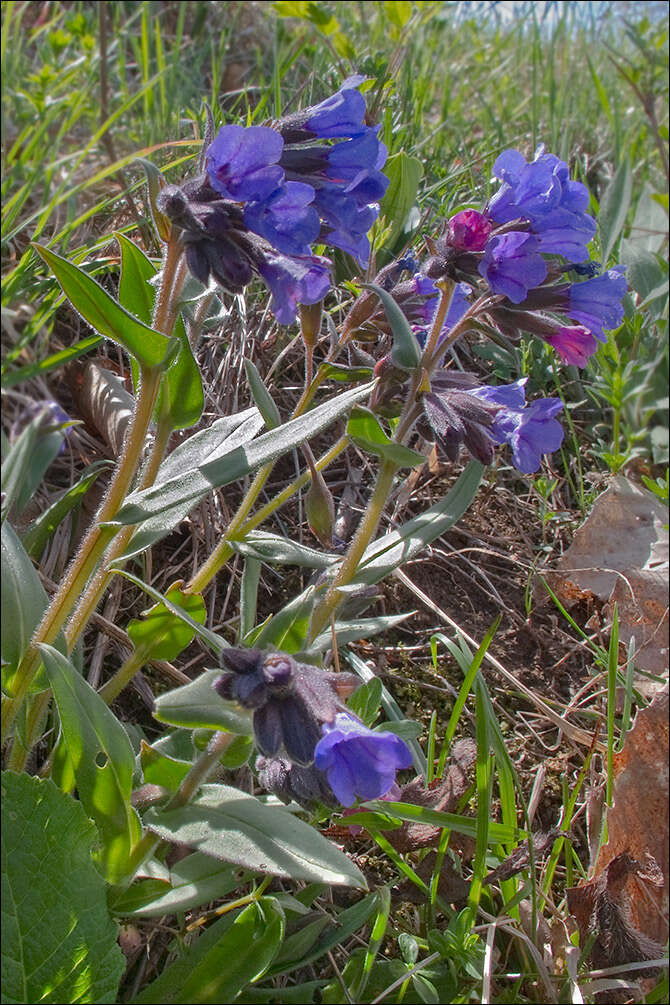
Pulmonaria australis (Murr.) W. Sauer, syn: Pulmonaria angustifolia var. australis Murr, Pulmonaria angustifolia auct. non L., Pulmonaria azurea auct., Pulmonaria visianii Degen & LengyelEN: Narrow-leaved Lungwort, DE: Sdalpen-Lungenkraut, Schmalblttriges LungenkrautSlo.: juni plunik, (ozkolistni pljunik),Dat.: April 7. 2011Lat.: 46.04428 Long.: 13.516918Code: Bot_501/2011_IMG4286Habitat: partly overgrown dry grassland next to a local road; almost flat terrain on a rather rounded hill ridge; partly sunny; elevation 350 m (1.150 feet); average precipitations 2.000-2.600 mm/year, average temperature 11-12 deg C, Sub-Mediterranean phytogeographical region. Substratum: soil.Place: Gorika Brda, next to the road from village Kobana to village Golo Brdo; 500 m southwest of village Vrhovlje pri Kobani; Goriko, Slovenia EC. Comment: Plants of genus Pulmonaria are on one side well known as popular medical herb. They are used primarily to treat lung problems but also for stomach and intestinal ailments, and kidney and urinary tract problems. On the other side, their separation and determination to species level is often difficult. About twelve quite variable species are known to grow in Slovenia having red, purple, pink, violet, blue or sometimes even white flowers. Types of hairs, bristles and/or glands (several of them may be present at the same time) on different parts of the plants, eventual darker spots on their leaves, ratio between length to width of the leaves, properties of rosette leaves (which develop mostly after blooming and are often not present when one finds a plant in bloom), color of flowers (which may significantly change during growth and depends also on type of the soil where they grow) all play a role in determination. Taxonomy of the genus is not yet agreed upon completely. For example, delimiting between Pulmonaria australis and Pulmonaria angustifolia is still uncertain (Ref. 2 and 3) and need further research.Pulmonaria australis is a beautiful plant having narrow to very narrow lanceolate ground leaves (mostly?) without darker spots. It appears early in the year, together with much more frequent Common Lungwort (Pulmonaria officinale) being one of the earliest decoration of our light woods and semi-open places. It usually appears around Easter time. One of the nice properties of Pulmonaria australis is also its very deep color of their flowers, which is deeper than of Pulmonaria officinale. It is a poisonous plant even for dogs and cats. Caution must be taken when one wants to use it as medical plant. Allegedly, even deer leave it alone. Thus its relatives are sometimes used as a 'deer-proof' ornamental garden plants. Pulmonaria australis is a European floral element (Ref.: 5) tending to be more frequent in the south. Less frequently, it can be found also in many parts of the Alps (except on their west part) (Ref.:4). It is not a common plant but also not a very rare one. It is not protected in Slovenia, however, in Austria it is considered rare to very rare and highly endangered species (Ref.: 2).Ref.:(1) Personal communication with Dr. Igor Dakskobler, Jovan Hadi Institute of Biology, Slovenian Academy of Sciences and Arts.(2) M.A. Fischer, W. Adler, K. Oswald, Exkursionsflora fr sterreich, Liechtenstein und Sdtirol, LO Landesmuseen, Linz, Austria (2005), p xx.(3) A. Martini et all., Mala Flora Slovenije (Flora of Slovenia - Key) (in Slovenian), Tehnina Zaloba Slovenije (2007), p 538. (4) D. Aeschimann, K. Lauber, D.M. Moser, J.P. Theurillat, Flora Alpina, Vol. 2., Haupt (2004), p 74xx.(5) K. Lauber and G. Wagner, Flora Helvetica, 5. Auflage, Haupt (2012), p 782.(6) W.K. Rottensteiner, Exkursionsflora fr Istrien, Verlag des Naturwissenschaftlichen Vereins Krten (2014), p 315.
-
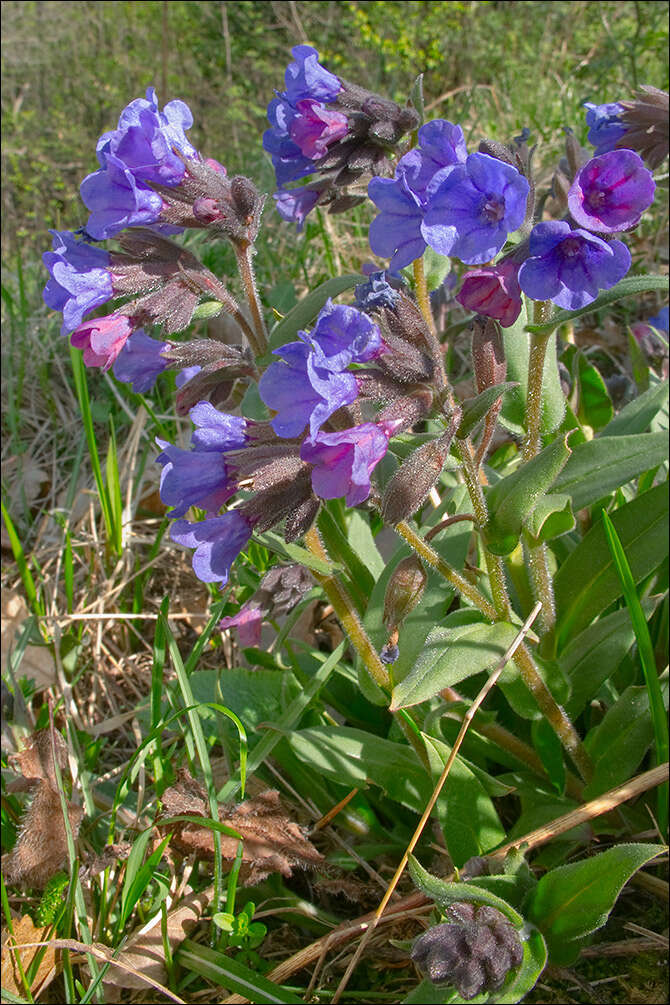
Pulmonaria australis (Murr.) W. Sauer, syn: Pulmonaria angustifolia var. australis Murr, Pulmonaria angustifolia auct. non L., Pulmonaria azurea auct., Pulmonaria visianii Degen & LengyelEN: Narrow-leaved Lungwort, DE: Sdalpen-Lungenkraut, Schmalblttriges LungenkrautSlo.: juni plunik, (ozkolistni pljunik),Dat.: April 7. 2011Lat.: 46.04428 Long.: 13.516918Code: Bot_501/2011_IMG4286Habitat: partly overgrown dry grassland next to a local road; almost flat terrain on a rather rounded hill ridge; partly sunny; elevation 350 m (1.150 feet); average precipitations 2.000-2.600 mm/year, average temperature 11-12 deg C, Sub-Mediterranean phytogeographical region. Substratum: soil.Place: Gorika Brda, next to the road from village Kobana to village Golo Brdo; 500 m southwest of village Vrhovlje pri Kobani; Goriko, Slovenia EC. Comment: Plants of genus Pulmonaria are on one side well known as popular medical herb. They are used primarily to treat lung problems but also for stomach and intestinal ailments, and kidney and urinary tract problems. On the other side, their separation and determination to species level is often difficult. About twelve quite variable species are known to grow in Slovenia having red, purple, pink, violet, blue or sometimes even white flowers. Types of hairs, bristles and/or glands (several of them may be present at the same time) on different parts of the plants, eventual darker spots on their leaves, ratio between length to width of the leaves, properties of rosette leaves (which develop mostly after blooming and are often not present when one finds a plant in bloom), color of flowers (which may significantly change during growth and depends also on type of the soil where they grow) all play a role in determination. Taxonomy of the genus is not yet agreed upon completely. For example, delimiting between Pulmonaria australis and Pulmonaria angustifolia is still uncertain (Ref. 2 and 3) and need further research.Pulmonaria australis is a beautiful plant having narrow to very narrow lanceolate ground leaves (mostly?) without darker spots. It appears early in the year, together with much more frequent Common Lungwort (Pulmonaria officinale) being one of the earliest decoration of our light woods and semi-open places. It usually appears around Easter time. One of the nice properties of Pulmonaria australis is also its very deep color of their flowers, which is deeper than of Pulmonaria officinale. It is a poisonous plant even for dogs and cats. Caution must be taken when one wants to use it as medical plant. Allegedly, even deer leave it alone. Thus its relatives are sometimes used as a 'deer-proof' ornamental garden plants. Pulmonaria australis is a European floral element (Ref.: 5) tending to be more frequent in the south. Less frequently, it can be found also in many parts of the Alps (except on their west part) (Ref.:4). It is not a common plant but also not a very rare one. It is not protected in Slovenia, however, in Austria it is considered rare to very rare and highly endangered species (Ref.: 2).Ref.:(1) Personal communication with Dr. Igor Dakskobler, Jovan Hadi Institute of Biology, Slovenian Academy of Sciences and Arts.(2) M.A. Fischer, W. Adler, K. Oswald, Exkursionsflora fr sterreich, Liechtenstein und Sdtirol, LO Landesmuseen, Linz, Austria (2005), p xx.(3) A. Martini et all., Mala Flora Slovenije (Flora of Slovenia - Key) (in Slovenian), Tehnina Zaloba Slovenije (2007), p 538. (4) D. Aeschimann, K. Lauber, D.M. Moser, J.P. Theurillat, Flora Alpina, Vol. 2., Haupt (2004), p 74xx.(5) K. Lauber and G. Wagner, Flora Helvetica, 5. Auflage, Haupt (2012), p 782.(6) W.K. Rottensteiner, Exkursionsflora fr Istrien, Verlag des Naturwissenschaftlichen Vereins Krten (2014), p 315.


